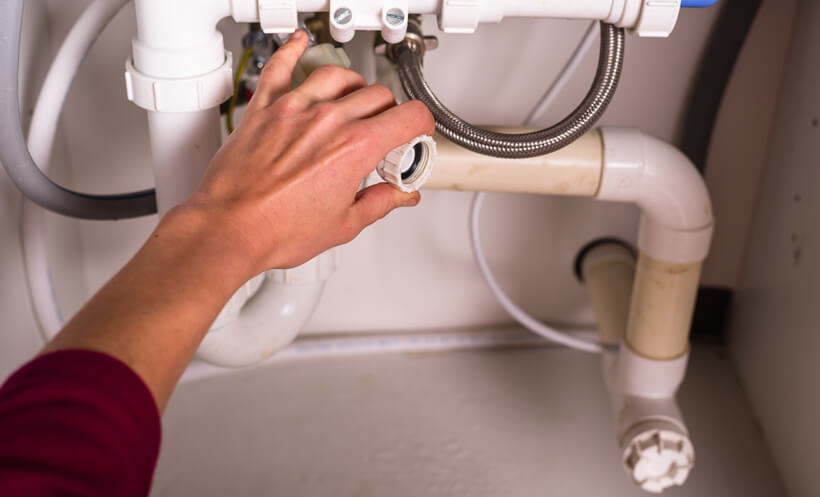Deciding to complete a DIY plumbing project can seem simple at first. But after a quick a trip to your local hardware store, it can easily change to overwhelming. With all the different piping options available, how do you decide which one is right for your plumbing project? Here’s an overview of the most popular types of plumbing piping.
Polyvinyl Chloride Pipe (PVC Pipe)
As the most commonly used plumbing pipe in residential plumbing, PVC piping’s popularity is due to its durability, affordability and ease of use. Suitable for both hot and cold potable water and sewage applications, PVC pipes are available in a range of thicknesses and configurations.
PVC does not bend under pressure and is often used for the main water supply line into a home. It’s best suited for indoor applications or underground plumbing. Due to warping, PVC pipe cannot be used with hot water applications. When exposed to UV lights for an extended period, warping can occur.
PEX Pipe
PEX pipe is one of the most modern types of piping and is the best pipe for indoor water distribution. Highly flexible, PEX pipe can be easily snaked through a home and bent around corners. Although it has a higher initial cost compared to other types of piping, its many benefits include minimal maintenance, fast installation and extreme versatility.
Additions and retrofits also benefit from this type of piping due to its ability to be spliced into an existing pipe. Although ill-suited for outdoor applications, it is durable enough for hot water applications.
Copper Pipe
Since the 1960s, copper piping has been widely used because of its durability, reliability and high heat tolerance. Highly resistant to corrosion, copper pipes are well suited for hot and cold drinking water supply, refrigerant lines for HVAC systems and underground service lines.
Drawbacks to copper piping include its expensive price tag and its requirement for soldering.
Galvanized Pipe
Made of steel or iron, galvanized piping is rarely used in today’s modern homes. Its zinc coating causes internal rust build-up inside small diameter pipes leading to water discolouration and release of lead. It’s also heavy to work with and can create reduced water pressure and clogged water lines.
Galvanized piping is commonly found in construction and is best suited for transporting non-potable water.
Chlorinated Polyvinyl Chloride Pipes (CPVC Pipes)
CPVC piping is more flexible than PVC piping and is suitable for hot and cold water supply. Great for DIYers because of its ease of use and flexibility, its extra chlorine contents make it safe for drinking water applications. Although well-insulated and fire-resistant, cons include its higher price tag, inability to be recycled and tendency to split if allowed to freeze.
The Bottom Line
Choosing the right type of piping is crucial to ensure your plumbing project is completed safely and correctly. So if you’re inexperienced, it’s best to contact a professional.
